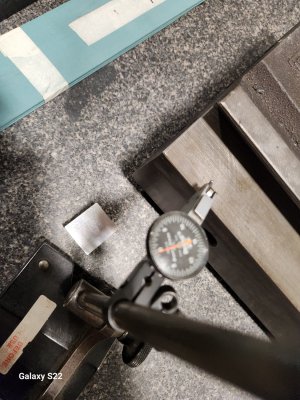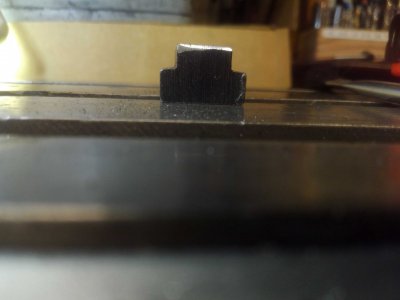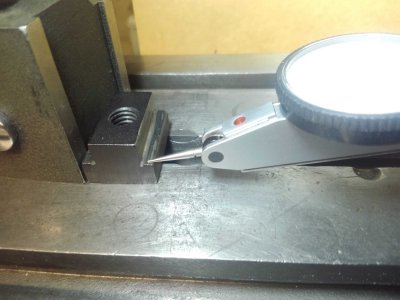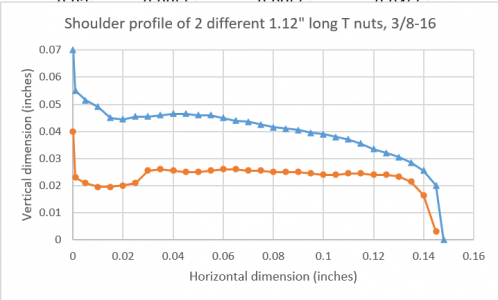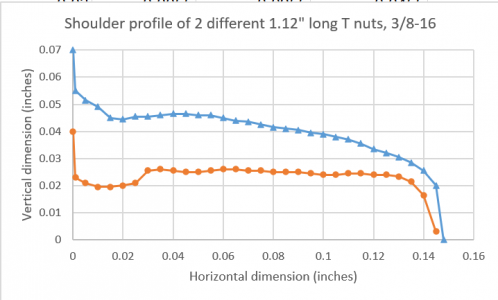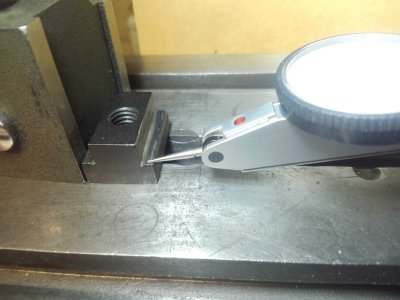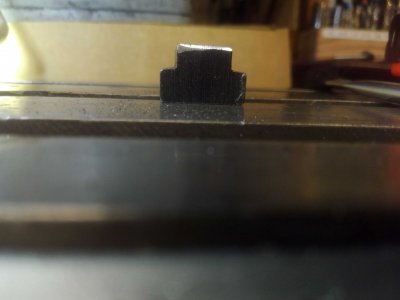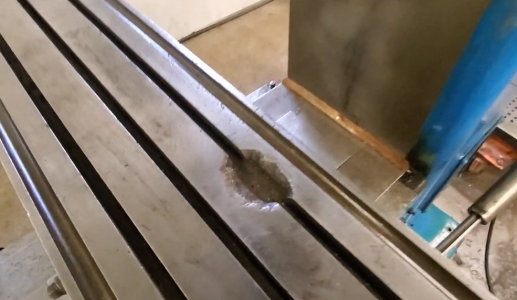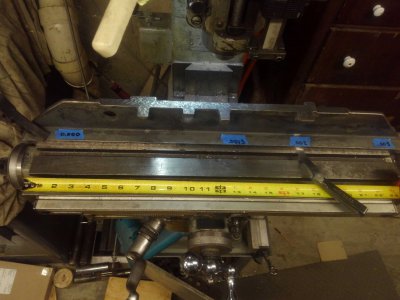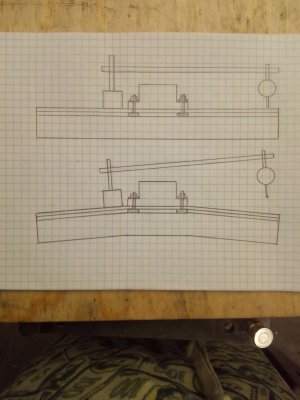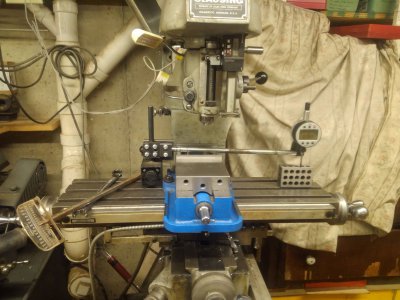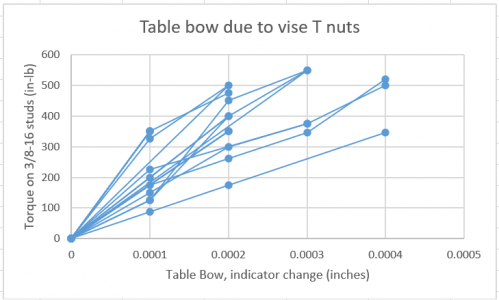Richard, I think we agree that tables droop. We also believe that many operators don't realize that they droop, or how much they droop. We seem to agree that over a short amount of x-travel, the effects are not apparent.
To properly rebuild a table, you need to do two things, restore the flatness of the table top, and restore the ways parallel to the top, sides, and T-slots (longitudinal axis). I don't know the proper order for those two operations, but doing one without the other will not restore accuracy.
Let me relate a real-world experience to explain why I asked the question in the first place.
I bought a Wells Index 847 that had been "rode hard and put away wet." I knew it had been used a lot near the center of X-travel, because the Acme lead screw threads had been worn to sharp points in that area, with a correspondingly huge amount of backlash. To get a rough idea of wear on the ways, I put a dial indicator against the table top and moved the X-axis full travel end-to-end, expecting a large deviation and the table "falling" in the center and "rising" at the ends because of wear. Imagine my surprise when I found no significant deviation over the entire travel! There were local deviations from physical damage to the table top, and a couple of places where the top rose slightly, then dropped back to zero. I now know, from your report, that these rises could come from distortion from clamping forces.
Since the mission profile of this machine is to repair equipment used on our Tree Farm, it is accurate enough for my purposes, so I left it there. This experience is why I asked the question. Normally, one would expect the effects of wear to "stack" the deviations, but under certain circumstances, it is possible for them to cancel out. I wouldn't expect the effects to be predictable or repeatable, but they are possible. I also don't believe that anyone should use this information to assume that a worn machine is accurate enough to hold a tolerance without further analysis and inputs from an experienced operator.


